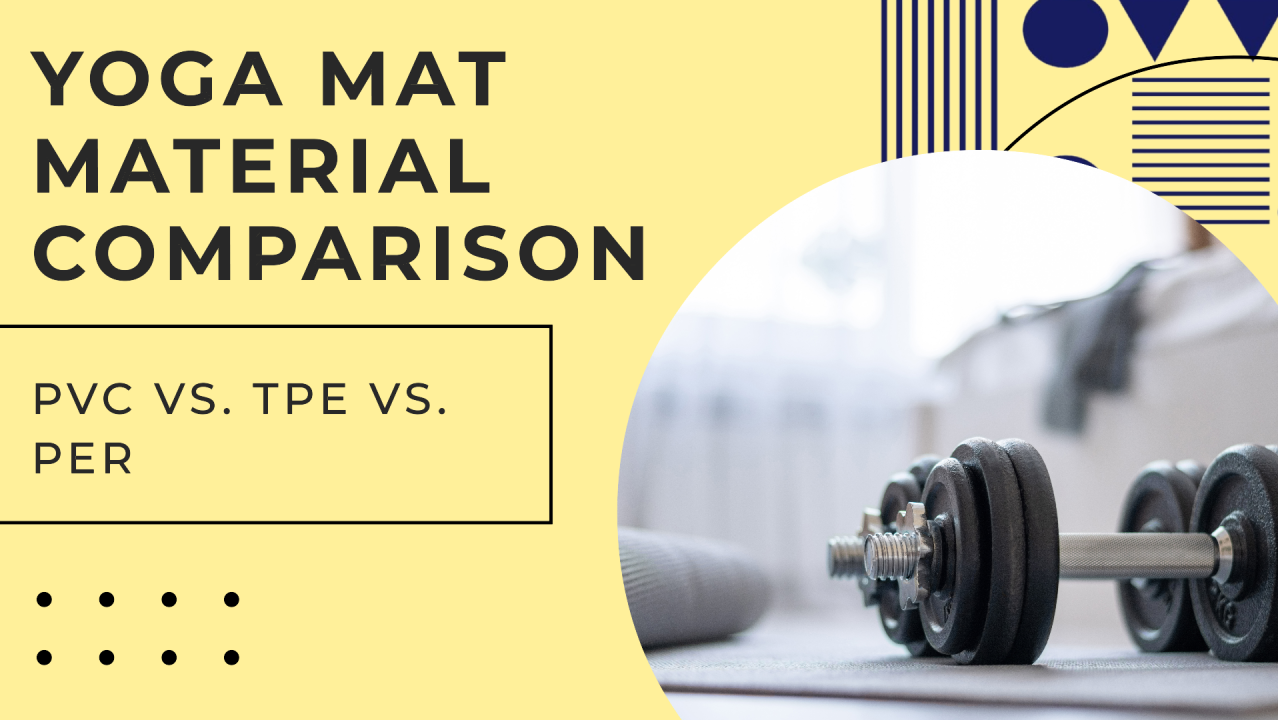How to choose Yoga mat: PVC vs. TPE vs. PER
![]() 2025.7.21
2025.7.21
 Blog
Blog

Imagine stepping onto your yoga mat, feeling it firmly beneath your feet, grounding you in your practice. In this guide, you’ll learn How to choose Yoga mat by comparing PVC, TPE, and PER from safety, performance, and sustainability perspectives.
PVC Yoga Mats – Durable but Risky Recycled Materials
PVC (Polyvinyl Chloride) mats are renowned for their exceptional durability and affordability, making them the most widely used mats in studios and gyms worldwide.
However, if sourced from low-grade recycled PVC or improper plasticizers, these mats often exhibit poor elasticity and shock absorption, leading to surface cracks and uneven wear.
Such defects can dramatically increase the risk of wrist strains, knee injuries, or slips, endangering practitioners and potentially damaging your reputation as a retailer or distributor.
Moreover, PVC production involves toxic chemicals like phthalates, ethylene dichloride, and dioxins, which pose health risks during manufacture and use if not properly controlled.
⭕️ Pros: Highly durable, easy to clean, latex-free.
❌ Cons: Poor elasticity, Non-biodegradable, can be slippery with sweat, not as eco-friendly.
TPE Yoga Mats – Eco-Friendly Innovator
TPE (Thermoplastic Elastomer) mats are celebrated for their environmental advantages, being free of PVC, heavy metals, and phthalates, and offering full recyclability in regions with proper facilities.
Their closed-cell structure repels moisture, maintaining a dry, hygienic surface while providing excellent cushioning and rebound for joint protection.
Although TPE mats generally carry a higher price tag than PVC, they use virgin, non-contaminated compounds, ensuring consistent performance and peace of mind for your customers.
⭕️ Pros: Excellent anti-skid properties, highly elastic, durable, eco-friendly, and recyclable.
❌ Cons: Generally more expensive than PVC mats.
Choosing a TPE mat means prioritizing both your practice and the planet. It’s an investment in quality and sustainability that pays off in your yoga journey.
Shop Now ➡️ Ken YO Yoga🧘
PER Yoga Mats – Balanced Eco-Performance
PER (Polymer Environmental Resin) mats combine modified PVC blends with additional eco-resins to reduce toxic emissions and enhance recyclability, striking a balance between performance and sustainability.
They deliver reliable cushioning and traction, with fewer harmful leachates than conventional PVC, meeting the needs of eco-conscious practitioners.
⭕️ Pros: Cleaner and less toxic than PVC, recyclable, good cushioning and traction, eco-friendlier.
❌ Cons: Higher price point compared to PVC.
While PER mats are more costly than standard PVC, sourcing from reputable manufacturers with transparent material disclosures and end-of-life recycling programs ensures genuine environmental benefits and protects your brand against “greenwashing” claims.
Expert Tips on How to choose Yoga mats Safely
-
Verify Certifications: Always check for Oeko-Tex Standard 100, REACH compliance, or similar third-party certifications to confirm the absence of harmful chemicals.
-
Assess Material Composition: Review full ingredient disclosures; prefer virgin TPE or certified PER blends over unknown recycled PVC sources.
-
Test Elasticity & Evenness: Squeeze and roll the mat to ensure uniform foaming and sufficient rebound, indicating quality materials that protect joints.
-
Evaluate Grip Under Flow Conditions: Practice a few Vinyasa transitions on the mat to confirm stable traction even when damp. REI
-
Confirm Recycling Programs: Partner with suppliers offering take-back or recycling initiatives to reduce environmental impact and appeal to eco-minded consumers.
Ready to choose your mat and elevate your practice? Explore our detailed guide to find the perfect match for your needs and values. Your journey to a better yoga experience starts now.
Follow ➡️ Ken Yo Co., Ltd. 🛎

